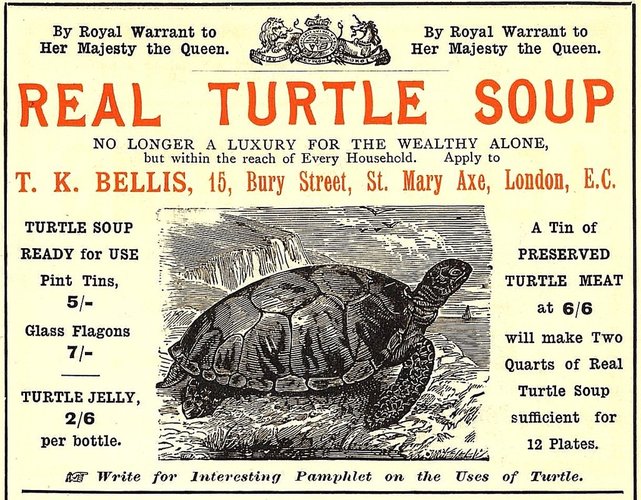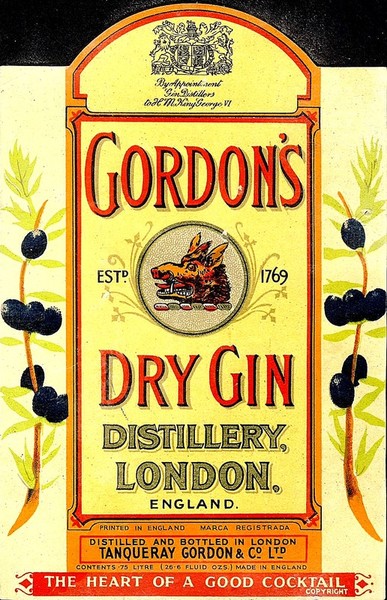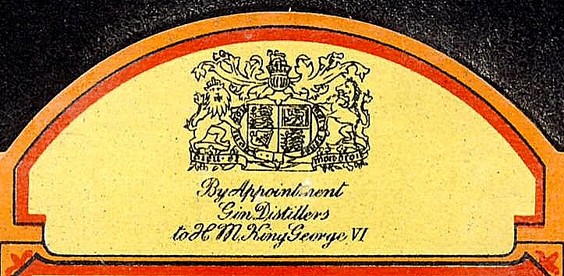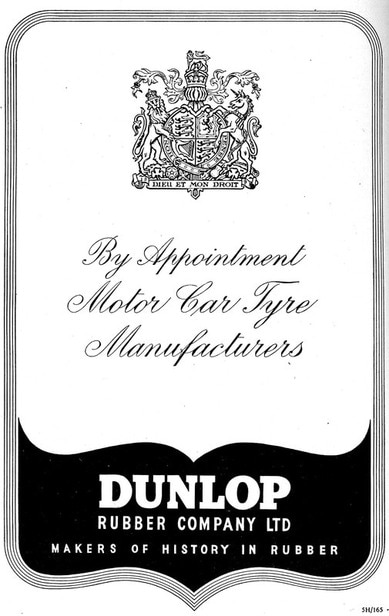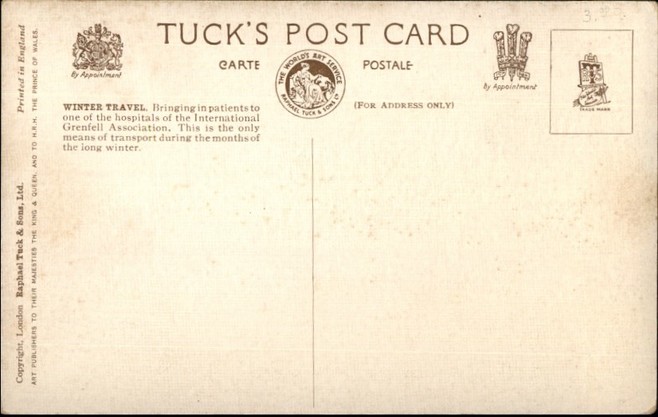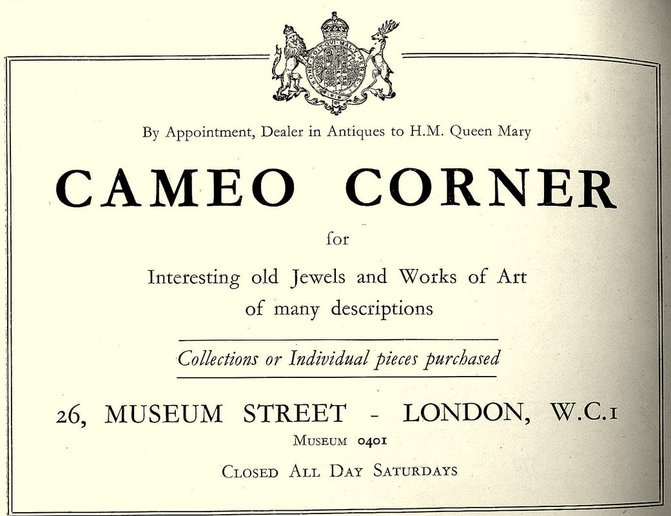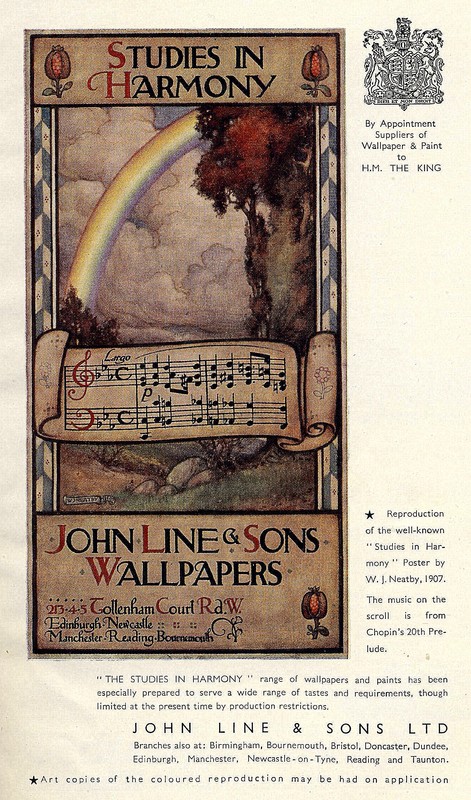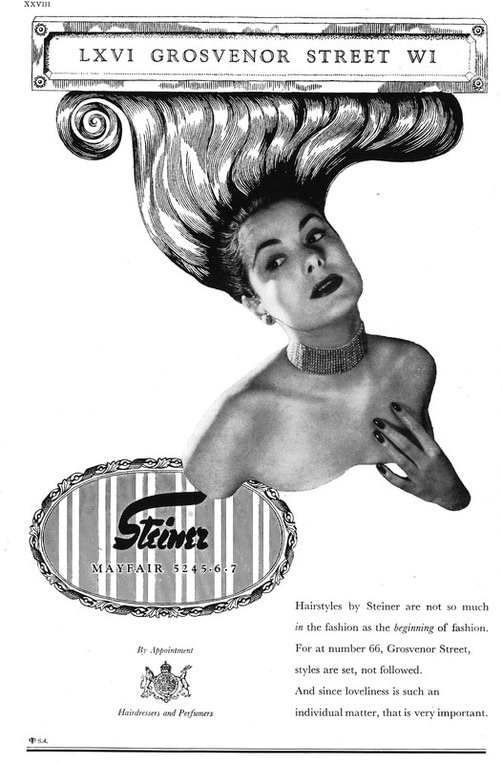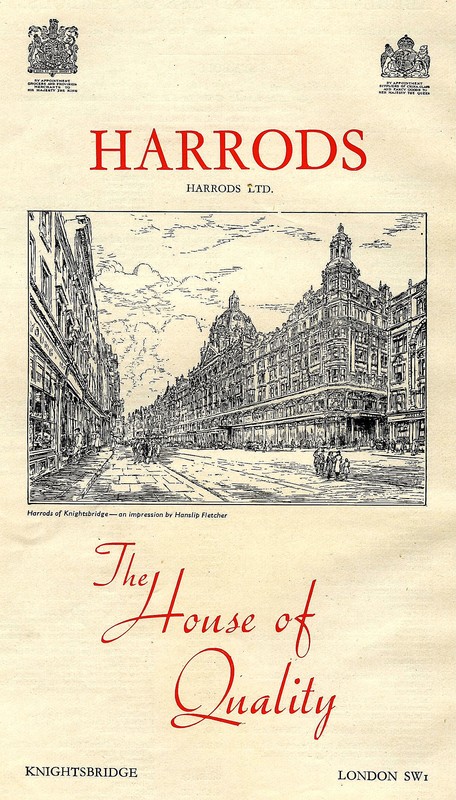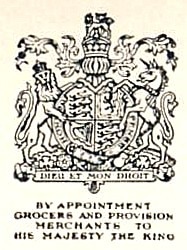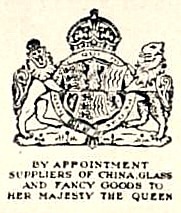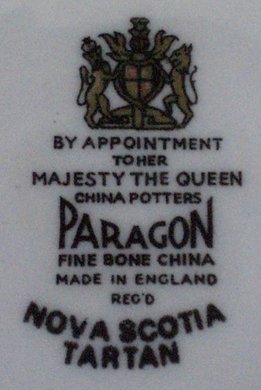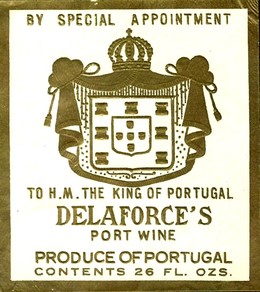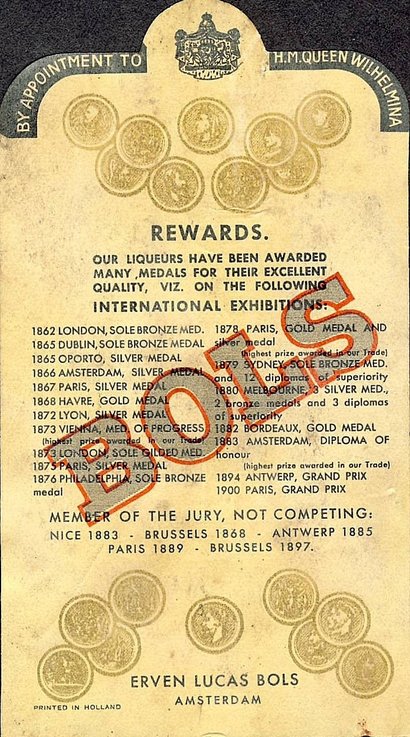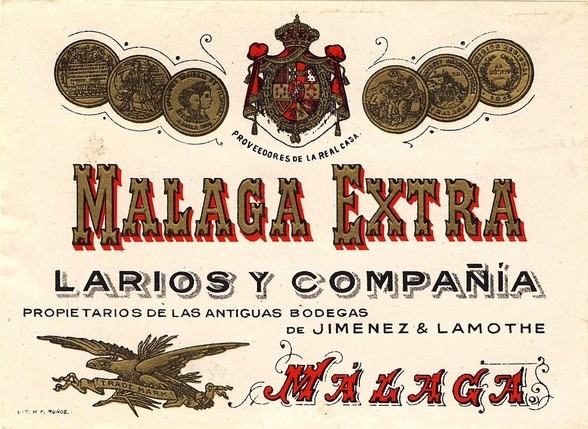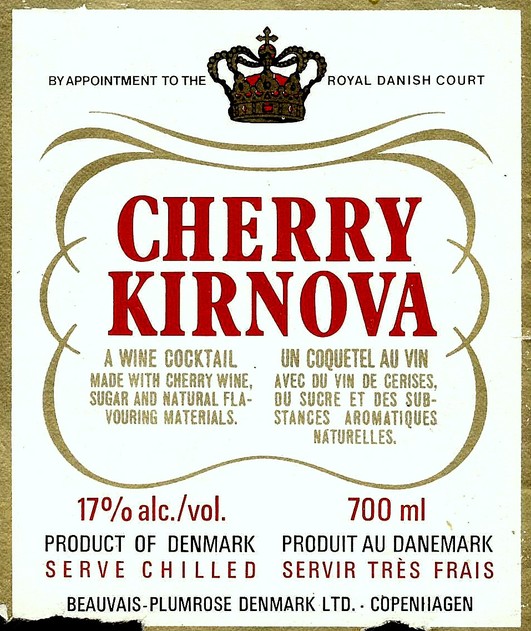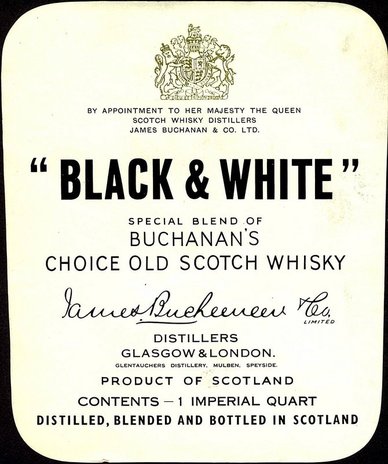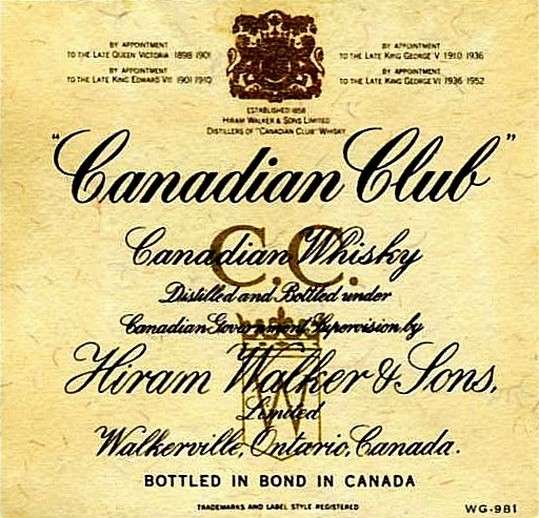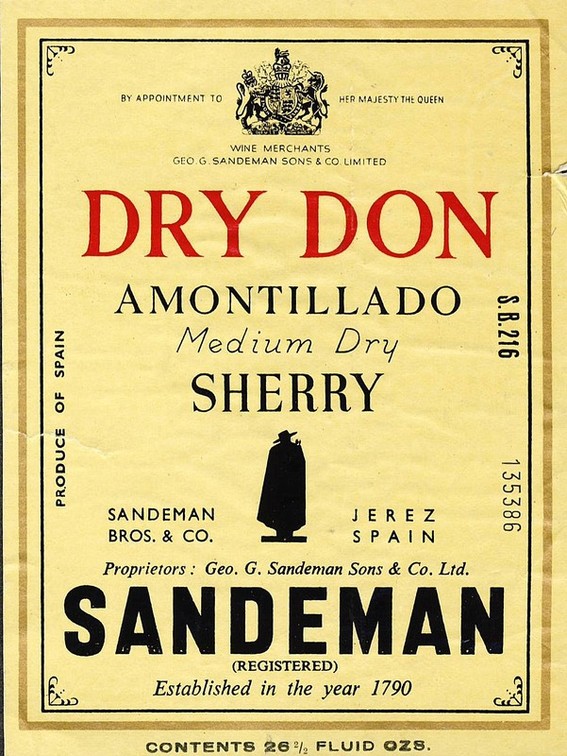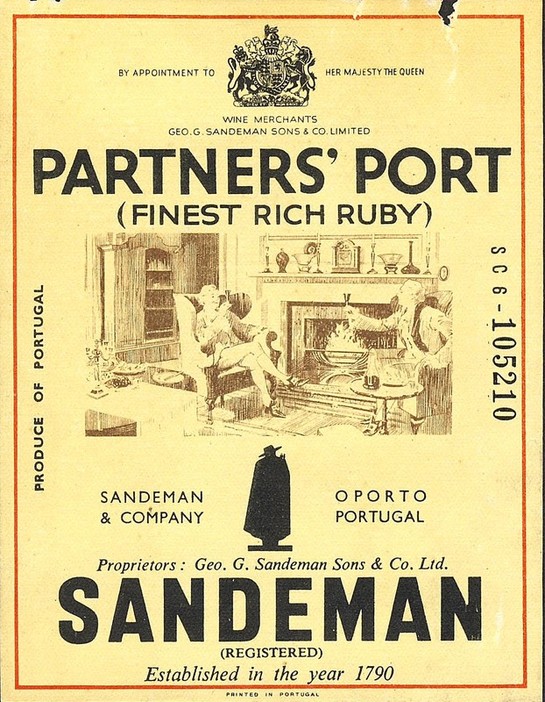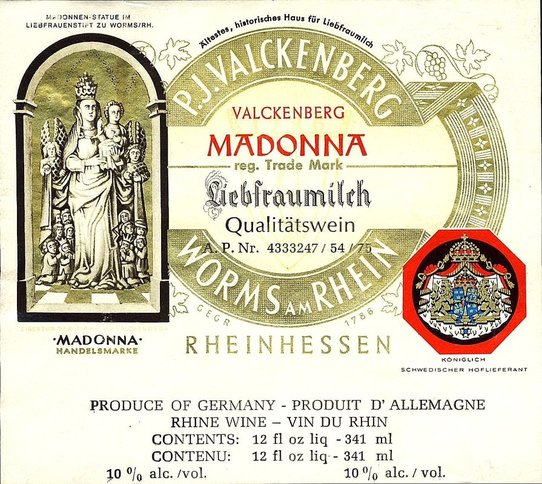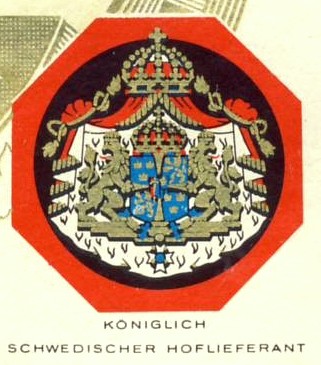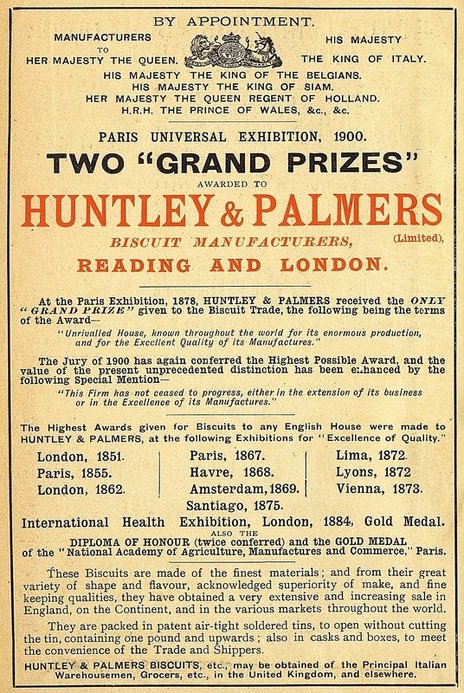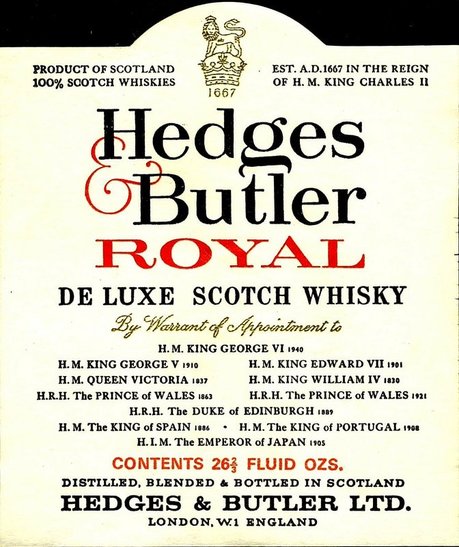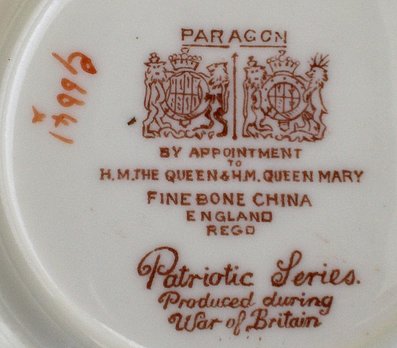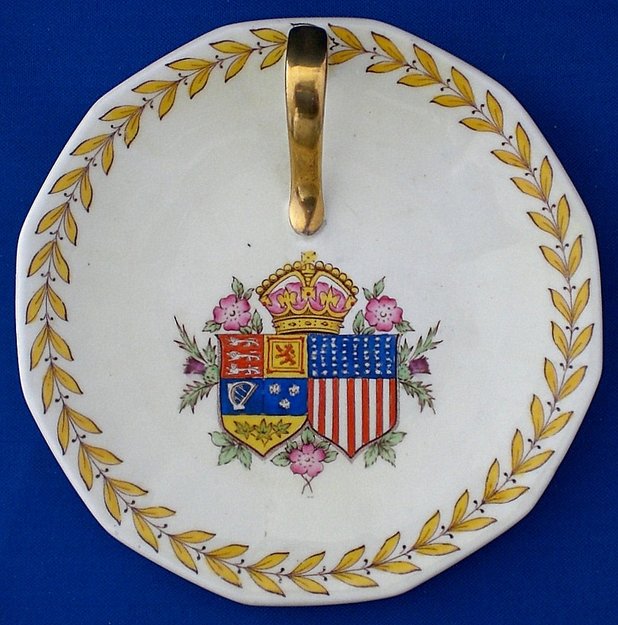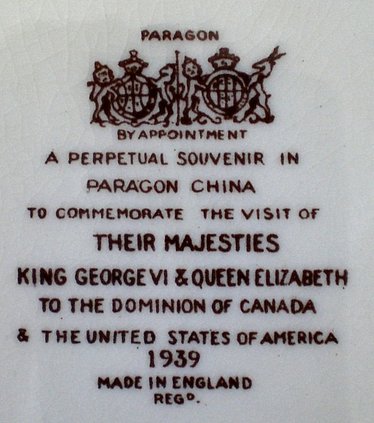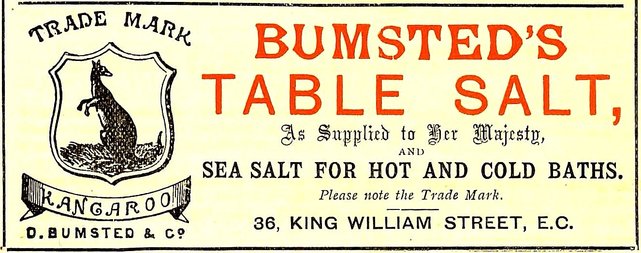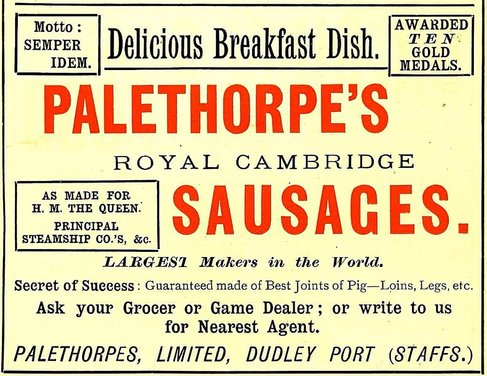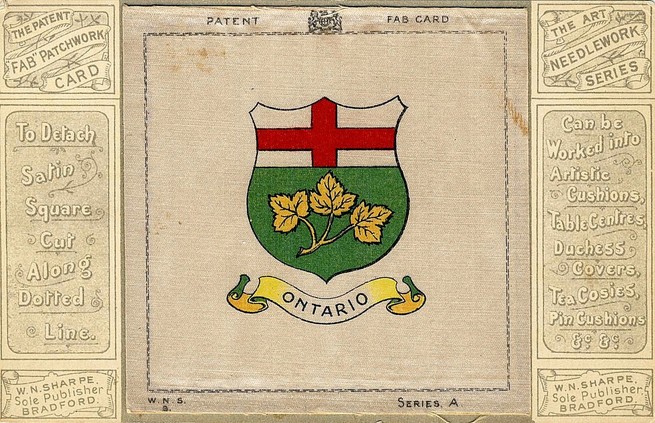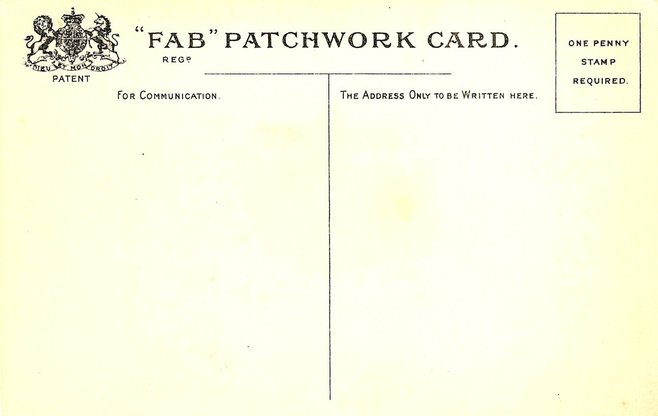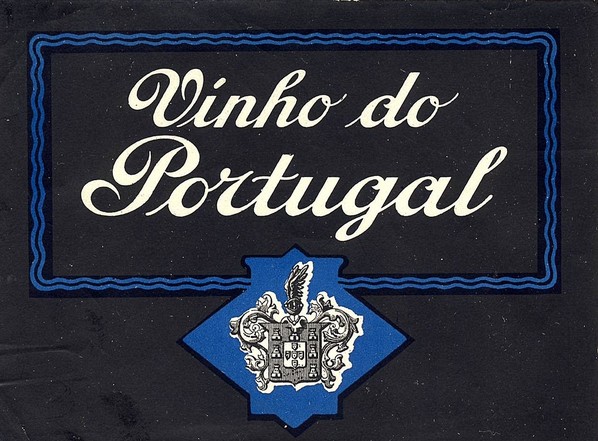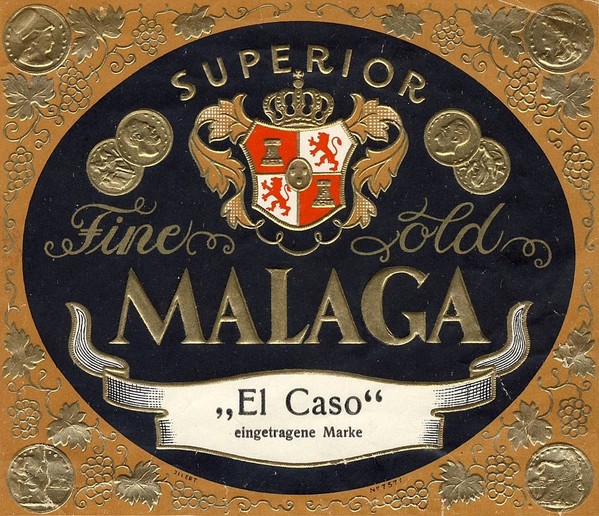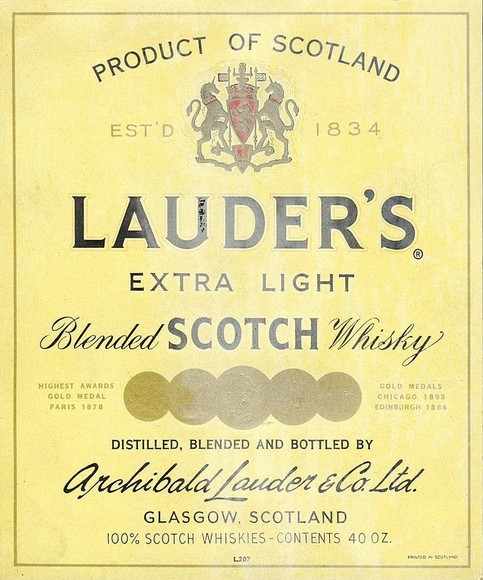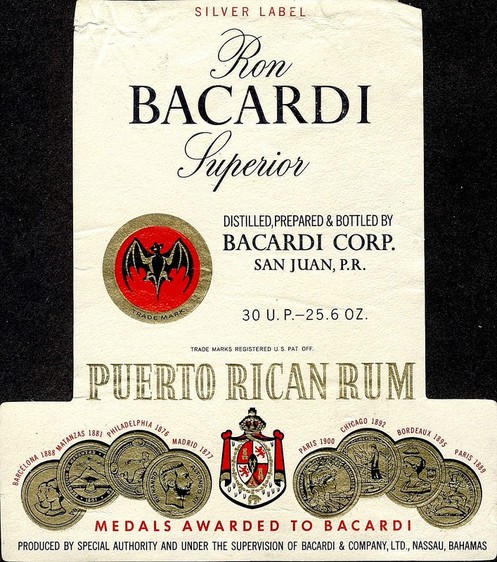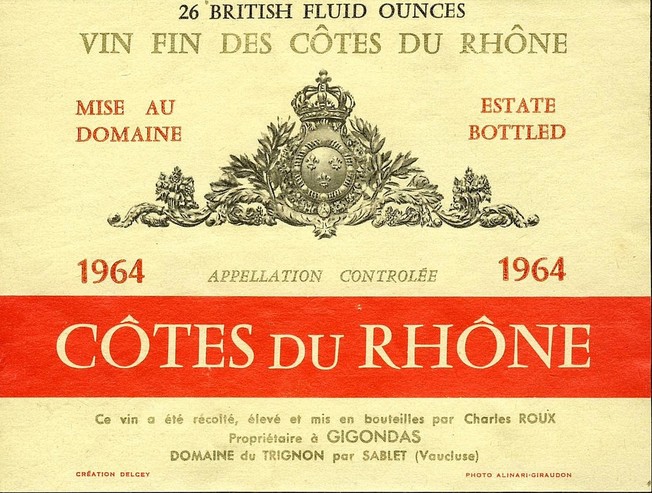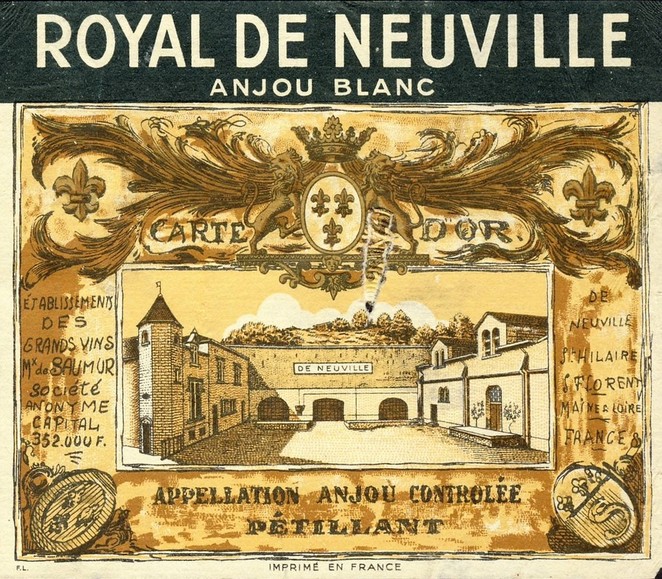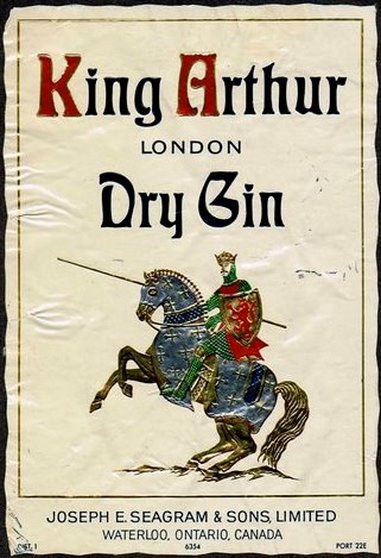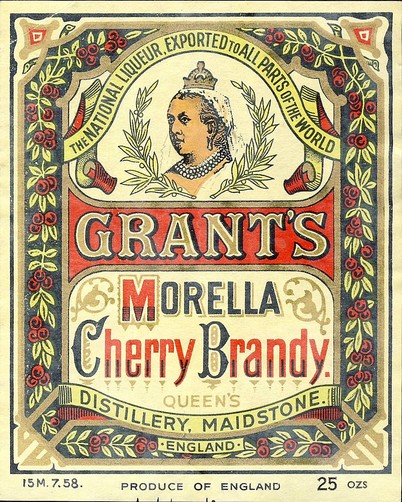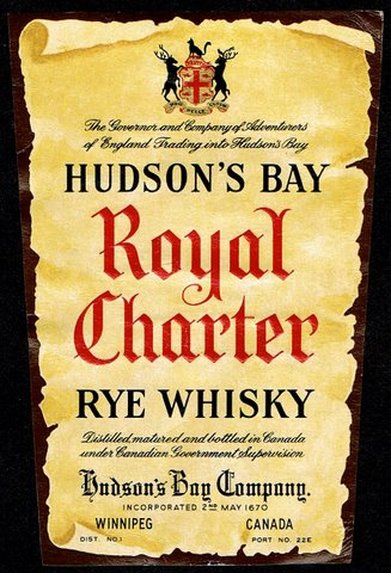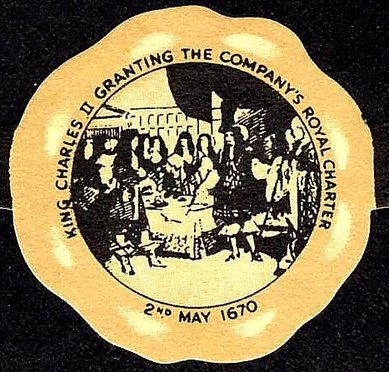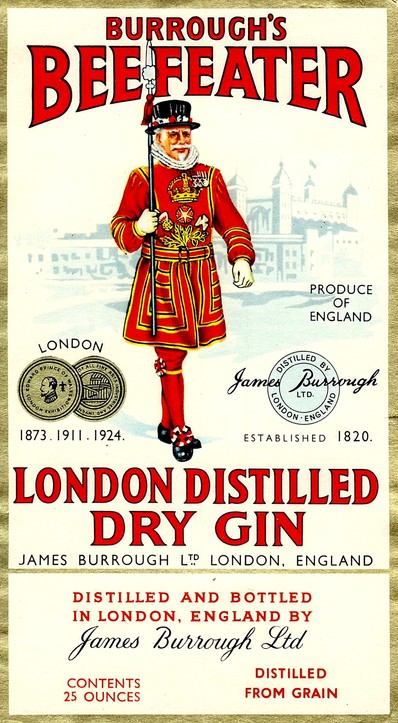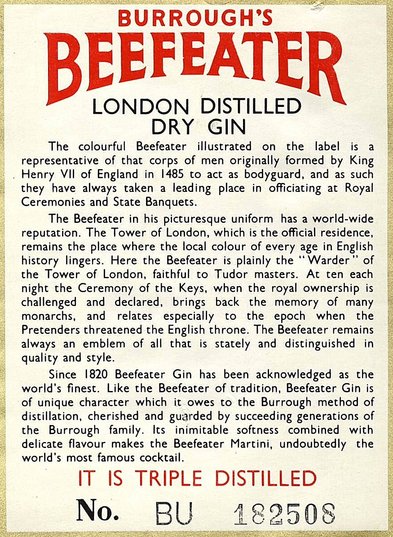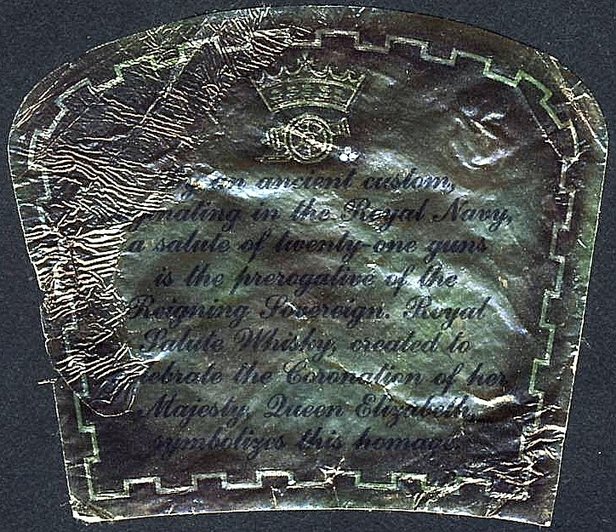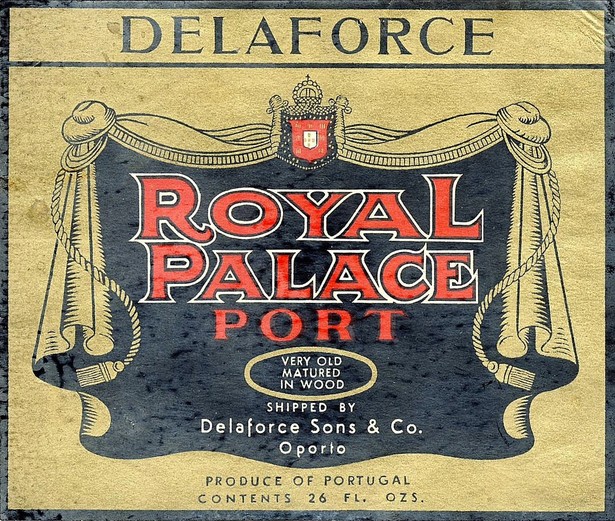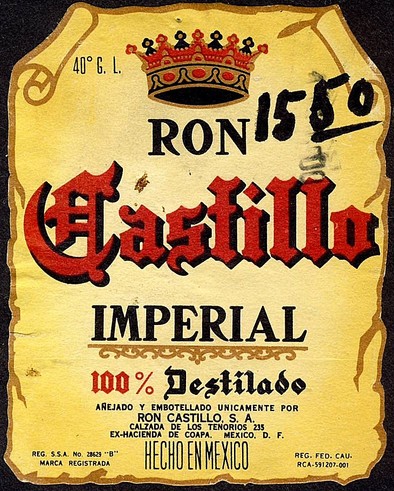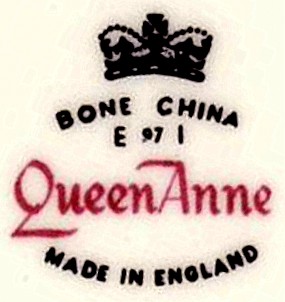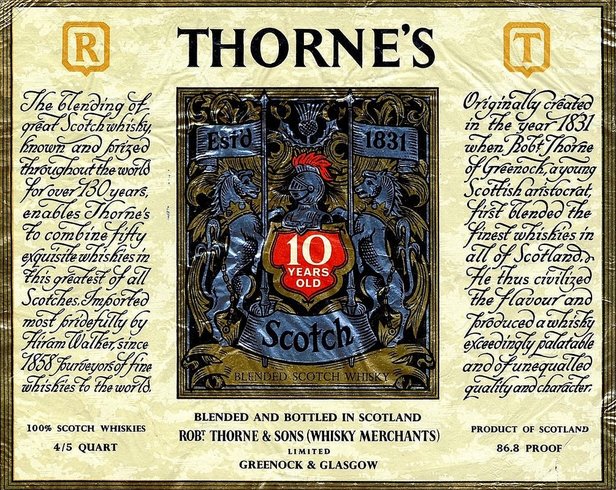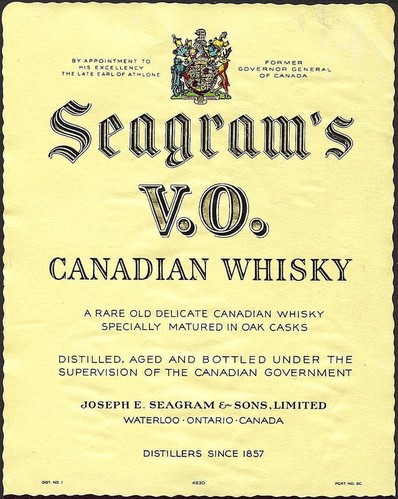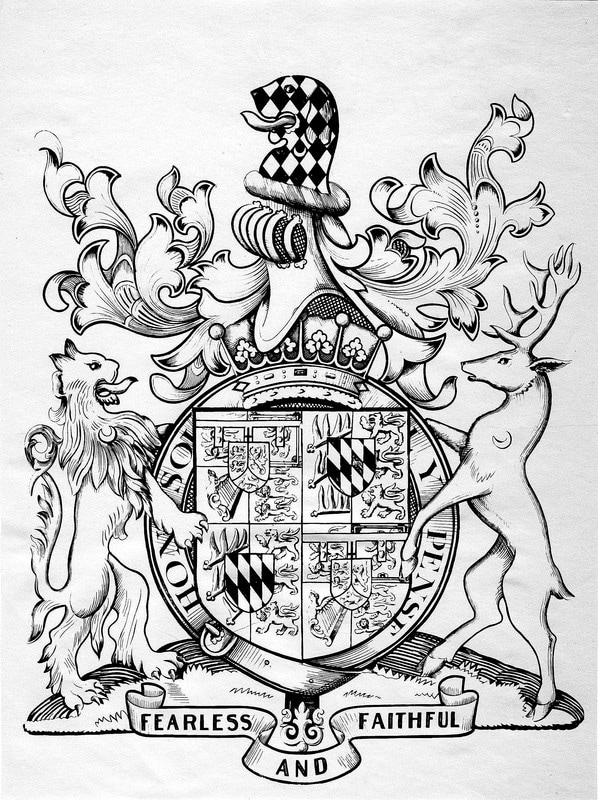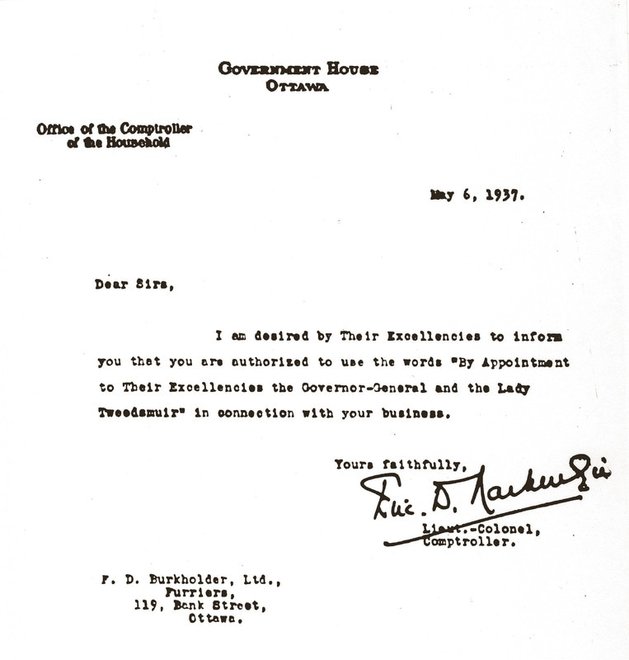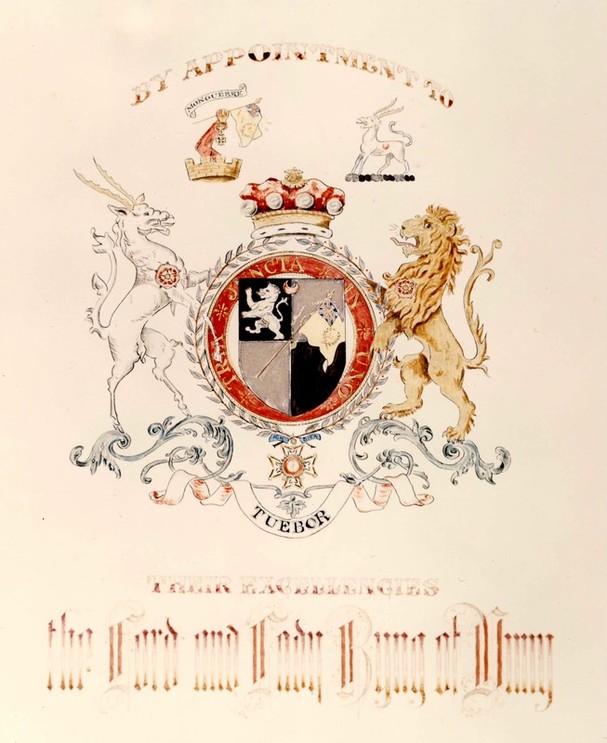Royal Warrants of Appointment
Auguste Vachon, Outaouais Herald Emeritus
Royal approval of a product, enterprise or service is a powerful promotional tool. If something is good enough for royalty, it is surely good enough for most buyers. While it is true that a very rich person could indulge in extravagances that could outshine most monarchs, what makes royal endorsement so effective is the fact that many of the goods favoured by royalty will find their way into any home, Nestle UK products for instance. The British royal warrants are signified by the phrases “By Royal Warrant” or “By Appointment” accompanied by a royal name and the royal arms which can vary according to the member of the royal family involved. The badge of the Prince of Wales, commonly known as the “Prince of Wales Feathers,” is also used. After many years of seeing advertisements with British royal appointments, my impression was that this was a British practice and that it was limited to food and drink. On looking more closely at the question, I discovered a phenomenon of international scope with many ramifications and applications. Besides royal warrants, there are many ways of referring to royalty in a commercial context, for instance royal names, coats of arms and other royal attributes. Examples of these are included as a complement to the main theme. A related subject is appointment to Canadian governors general, which is dealt with briefly. The pictures that illustrate aspects of these phenomena are from the family library, the ceramic and postcards collections that my wife and I have assembled, and particularly from a collection of wine and spirits labels that I found in a Salvation Army Thrift Store.
N.B.
All the websites appearing in this article were accessed on 18 May 2017.
All the websites appearing in this article were accessed on 18 May 2017.
1. Many Products and Services
Royal warrants of appointment have been issued in the hundreds and for centuries by British royalty. They apply to a huge variety of goods (figs. 1-6, 8- 9) —not just fancy goods—, to establishments (figs. 3-6, 8-9, and to services (fig. 7). These distinctions are somewhat arbitrary. In many cases, it is both the establishment and its products that receive the appointment (figs. 2-6, 8). Royal favour can also involve both a service and a product such as in the case of Steiner (fig. 7) which provides hairstyling, a service, and perfumes, a product. In the case of Harrods (fig. 8), it seems that royal endorsement applies to the establishment as a whole, but the appointments mention more specific items. For King George VI, the goods are rather general, namely “grocers and provision merchants” but for his wife Queen Elizabeth, the articles are more exclusive, namely “china, glass and fancy goods.” In the “Real Turtle Soup” advertisement (fig. 1) the emphasis is on turtle soup and it seems that the royal warrant applies specifically to the soup. There are other instances where clearly a product alone is endorsed. For Canadian Club Whisky, only that brand enjoyed royal approval, not all the products of Hiram Walker & Sons and not the company itself (fig. 19). On the whole, royal warrants are granted to those who manufacture or create products and to those who sell them. Examples of other warrant holders with a different orientation are tailors and builders that transform industrial materials; bookbinders that enhance existing man-made objects; and enterprises that solely provide a service such as storage, moving or shipping.
Royal warrants of appointment have been issued in the hundreds and for centuries by British royalty. They apply to a huge variety of goods (figs. 1-6, 8- 9) —not just fancy goods—, to establishments (figs. 3-6, 8-9, and to services (fig. 7). These distinctions are somewhat arbitrary. In many cases, it is both the establishment and its products that receive the appointment (figs. 2-6, 8). Royal favour can also involve both a service and a product such as in the case of Steiner (fig. 7) which provides hairstyling, a service, and perfumes, a product. In the case of Harrods (fig. 8), it seems that royal endorsement applies to the establishment as a whole, but the appointments mention more specific items. For King George VI, the goods are rather general, namely “grocers and provision merchants” but for his wife Queen Elizabeth, the articles are more exclusive, namely “china, glass and fancy goods.” In the “Real Turtle Soup” advertisement (fig. 1) the emphasis is on turtle soup and it seems that the royal warrant applies specifically to the soup. There are other instances where clearly a product alone is endorsed. For Canadian Club Whisky, only that brand enjoyed royal approval, not all the products of Hiram Walker & Sons and not the company itself (fig. 19). On the whole, royal warrants are granted to those who manufacture or create products and to those who sell them. Examples of other warrant holders with a different orientation are tailors and builders that transform industrial materials; bookbinders that enhance existing man-made objects; and enterprises that solely provide a service such as storage, moving or shipping.
Fig. 1. A food product by appointment to Her Majesty the Queen, namely Queen Victoria. The advertisement emphasizes that turtle soup is “No longer a luxury for the wealthy alone, but within the reach of every household.” This miracle is accomplished by the fact that turtle soup is available in tins and flagons and that turtle jelly in a bottle and turtle meat in tins can be purchased to make large quantities of soup with a personal touch. In other words, everyone can eat what royalty eats. From Mrs. Isabella Beeton, The Book of Household Management (London: Ward Lock & Co., 1901, p. 11 at back.
Fig. 2. A drink enjoying royal appointment to His Majesty King George VI. Royal appointment still exists for this product.
Fig. 3. Royal support for a Company with a down-to-earth product. Burke’s Peerage, 1949, p. xxii.
Fig. 4. The postcard company Raphael Tuck & Sons was granted a royal warrant by Queen Victoria in 1883, which warrant was renewed by succeeding sovereigns. This postcard is inscribed “Art publishers to Their Majesties the King & Queen and to H.R.H The Prince of Wales” and features the royal arms and the feather badge of the prince along with the inscription “By Appointment.” Earlier Tuck postcards only displayed the royal arms along with the inscription “Art publishers to Their Majesties the King & Queen” example: https://tuckdb.org/postcards/105320. The above card, from the Auguste & Paula Vachon postcard collection, was first used on 19/12/1933, see: https://tuckdb.org/postcards/27446. Tuck DB Postcards (https://tuckdb.org/) is a very comprehensive site relating to Tuck and its production.
Fig. 5. An establishment and a luxury product enjoying royal favour. Burke’s Peerage, 1949, p. clvi.
Fig. 6. A wallpaper manufacturer with branches in many United Kingdom cities. Burke’s Peerage, 1949, p. lxxxvii.
Fig. 7. A hairdressing service and perfumes fit for royals. Burke’s Peerage, 1949, p. xxviii.
Fig. 8. A well known historic department store with the motto Omnia Omnibus Ubique (Everything for Everyone Everywhere). See its armorial bearings at: http://www.alamy.com/stock-photo-coat-of-arms-outside-harrods-department-store-knightsbridge-london-9253259.html. The appointment is to King George VI and to his wife Queen Elizabeth. Burke’s Peerage, 1949, p. xxvi.
Fig. 9. Paragon is one of the best known ceramic companies to have received a royal appointment for its fine bone china. Bone china, an English specialty, is a hard-paste porcelain made exclusive by the addition of ash from calcined animal bones. The bone ash makes the porcelain more translucent and allows a greater range of firing temperatures with less distortion and waste. It is not surprising that a number of English ceramic companies have received royal warrants for this fine product and other ceramic ware, for instance: Cauldon Ware Brown-Westhead Moore & Co., The Caverswall China Co. (Prince of Wales), Moorcroft Pottery, Royal Crown Derby Porcelain Co., Royal Doulton Potteries, Anthony Shaw of Burslem for stone china, Spode/Copeland Pottery Manufacturer (Stoke & London), and Wedgwood. Examples of porcelain manufacturers in other countries that have received imperial or royal favour are Manufacture royale de Sèvres (Louis XV) latter Manufacture impériale de Sèvres (Napoleon), Royal Copenhagen of Denmark (since 1775), De Porceleyne Fles or Royal Delft (Queen Wilhelmina of the Netherlands, 1919).
2. Other Countries
Royal approval of products exists in many countries where the monarchy survives or has existed.
Royal approval of products exists in many countries where the monarchy survives or has existed.
Fig. 10. Appointment to the King of Portugal with the royal arms. The appointment on this label, which dates several decades after 1910 when Portugal became a republic, harps back to an earlier period when the country still had a king.
Fig. 11. The coat of arms of the Netherlands is difficult to make out on this Bols label, but the inscription “By appointment to H.M. Queen Wilhelmina” is clear.
Fig. 12. Purveyors to the King of Sweden. Though not too clearly depicted, the royal arms are there at the top.
Fig. 13. Proveedores de la Real Casa means literally “Puveyors to the Royal House.” This is the way of signifying appointment to the king of Spain. Lithographed by H.F. Muñoz.
Fig. 14. A product made in Danemark “By appointment to the Royal Danish Court.” Only the royal crown is featured.
3. Scotland
Goods made in Scotland sometimes feature the royal arms as used in England and the United Kingdom or the royal arms as used in Scotland.
Goods made in Scotland sometimes feature the royal arms as used in England and the United Kingdom or the royal arms as used in Scotland.
Fig. 15. This Scotch whisky produced entirely in Scotland by appointment to Her Majesty the Queen displays the royal arms as used in Scotland.
Fig. 16. Like figure 15, this Scotch whisky produced in Scotland by appointment to Her Majesty the Queen displays the royal arms as used in Scotland.
Fig. 17. Although a product of Scotland, this Scotch whisky label features the royal arms as used in England and the United Kingdom.
Fig. 18. The label of this Scotch whisky “distilled, blended and bottled in Scotland” displays the royal arms as used in England and the United Kingdom.
4. Royal Endorsement of Products in Foreign Countries.
The royalty of one country endorsing products made in another country is a widespread practice.
The royalty of one country endorsing products made in another country is a widespread practice.
Fig. 19. The Canadian Club brand of Hiram Walker and Sons received a royal warrant of appointment to Queen Victoria in 1898 and also an appointment to her son the Prince of Wales. The smaller print on the label reads: (top left) “By appointment to the late Queen Victoria 1898-1901/By appointment to the late King Edward VII 1901-1910” (top right) “By appointment to the late King George V 1910-1935/By appointment to the late King George VI 1936-1952” (below the royal arms) “Established 1858/ Hiram Walker & Sons Limited/Distillers of ‘Canadian Club’ whisky” (at the base of the label) “Trademarks and label style registered.” The circumstances of the royal endorsement are described on this site: http://deadcanadians.ca/index.php/did-you-know/item/289-walker-received-royal-warrant. Queen Elizabeth eventually discontinued the appointment although an advertisement in the magazine Motor Trend of October 1974 still displays the appointment to the queen with her royal arms: https://www.pinterest.com/pin/479422322810325850/. Recently the Canadian bed manufacturer Hypnos received a warrant of appointment to Queen Elizabeth:
http://hypnoscanada.com/about-us/royal-warrant-2/. To my knowledge there is no important study of the royal warrants of appointment issued to Canadian enterprises and products.
http://hypnoscanada.com/about-us/royal-warrant-2/. To my knowledge there is no important study of the royal warrants of appointment issued to Canadian enterprises and products.
Fig. 20. Endorsement by Her Majesty Queen Elizabeth II of the French vermouth produced by Noilly Prat & Cie of Marseillan, France.
Fig. 21. Appointment to Her Majesty Queen Elizabeth II for Geo. G. Sandeman, producer of Amontillado Sherry in Spain. The label is reminiscent of the short story by Edgar Allan Poe “The Cask of Amontillado.”
Fig. 22 Appointment to Her Majesty Queen Elizabeth II in favour of Geo. G. Sandeman, producer of Partners' Port in Portugal.
Fig. 23. The German company P. J. Valckenber is recognized as supplier of Liebfraumilch wine to the King of Sweden with the royal arms and an inscription.
Fig. 24. Robert Macnish Co. of Glasgow, Scotland, supplies Grand Macnish Scotch to His Majesty the King of Sweden by appointment.
Fig. 25. A. de Luz & Fils furnishes French cognac to the court of the King of Denmark. The company is located in Angeac-Champagne in Charente, a Department of South West France. The arms at the top are those of Denmark.
Fig. 26. J-M. Monmousseau supplies bubbly wine to the Court of Sweden. It’s trademark includes the arms of a member of the House of Bourbon. The arms are differenced in the centre with a bâton péri en barre, in English a baton (or baston) sinister or a bendlet sinister couped. In plain language, it means a short diagonal band in centre of the shield, leaning to the right. The arms of Louis-Alexandre de Bourbon, Count of Toulouse and Grand Admiral of France, are differenced in this way.
5. Multiple Domestic and International Royal Endorsements
Figures 27 to 30 illustrate the fact that royal favour is granted for various products by many monarchs the world over, and also that products receive royal warrants from royal consorts as well as from princes and princesses and dukes and duchesses. Worcester Royal Porcelain Company presents a fine example of United Kingdom royal appointments at several levels along with foreign appointments: “Warrants to King George III; the Prince of Wales, 1807; the Princess of Wales, 1808; Princess Charlotte of Wales, 1814; Duchess of Kent, 1830; Duchess of Kent and Princess Victoria, 1834; Queen Victoria, 1883; King Edward VII., 1901; and King George V., 1911; also Special Appointment to the Emperor of Austria and the Imperial Court of Vienna.”(Whitaker’s Red Book of Commerce or Who’s Who in Business, 1914). Unlike Paragon (figs. 9, 29-30), Worcester Royal Porcelain does not mention royal appointment with its manufacturer’s marks, although its marks do feature a crown and the name “royal.”
Figures 27 to 30 illustrate the fact that royal favour is granted for various products by many monarchs the world over, and also that products receive royal warrants from royal consorts as well as from princes and princesses and dukes and duchesses. Worcester Royal Porcelain Company presents a fine example of United Kingdom royal appointments at several levels along with foreign appointments: “Warrants to King George III; the Prince of Wales, 1807; the Princess of Wales, 1808; Princess Charlotte of Wales, 1814; Duchess of Kent, 1830; Duchess of Kent and Princess Victoria, 1834; Queen Victoria, 1883; King Edward VII., 1901; and King George V., 1911; also Special Appointment to the Emperor of Austria and the Imperial Court of Vienna.”(Whitaker’s Red Book of Commerce or Who’s Who in Business, 1914). Unlike Paragon (figs. 9, 29-30), Worcester Royal Porcelain does not mention royal appointment with its manufacturer’s marks, although its marks do feature a crown and the name “royal.”
Fig. 27. These Biscuit makers are favoured by the sovereigns of many countries, as well as by the Prince of Wales and others. From Mrs. Isabella Beeton, The Book of Household Management (London: Ward Lock & Co., 1901), back flyleaf.
Fig. 28. A whiskey that is a favorite of many sovereigns internationally as well as of the Prince of Wales and the Duke of Edinburg.
Fig. 29. Both Her Majesty Queen Elizabeth, wife of King George VI, and Queen Mary, mother of George VI, have accredited Paragon porcelain by royal warrant. The cup features the arms of the Province of Québec as granted by Queen Victoria in 1868. Placing an armorial shield at the bottom of a cup is unusual because it disappears when the cup is filled. The cup is now part of the Vachon Collection at the Canadian Museum of History.
Fig. 30. Lemon dish (nappy) with handle by Paragon, England, 1939. The coats of arms are the same as in figure 29 on this dish dedicated to the visit of King George VI and Queen Elizabeth to Canada in 1939.
Fig. 31. Approval for Liebfraumilch wine from the late Grand Duke Ludwig IV of Hesse. Louis IV (Friedrich Wilhelm Ludwig Karl) Grand Duke of Hesse and by Rhine reigned from 1877 to 1892. The Grand Duchy of Hesse and by Rhine remained a sovereign realm until 1918. Evidently the company remained proud of its ducal endorsement many years after the fact.
6. Different Meanings for “Providers to Royalty”
“By appointment to” seems specific to the United Kingdom and Commonwealth countries. In Europe in general, the notion is conveyed by the concept of provider, supplier or furnisher. For instance, “Fournisseur de Sa Majesté” in French translates into “Provider to His Majesty” and “Proveedores de la Real Casa” in Spanish translates into “Providers to the Royal House” which is the equivalent of “By appointment to His/Her Majesty” in English. When the idea of provider or supplier to His/Her Majesty is used in English publicity without “By appointment to,” it is sometimes doubtful that the company is acting under a royal warrant. For instance the advertisement for Bumsted’s table salt merely states “As Supplied to Her Majesty” and that for Palethorpe’s Royal Cambridge Sausages specifies “As made for H.M. The Queen. Principal Steamship Co.’s, &c.” (figs.32-33). One important clue that these companies may not be royal warrant holders is the absence of royal arms.
“By appointment to” seems specific to the United Kingdom and Commonwealth countries. In Europe in general, the notion is conveyed by the concept of provider, supplier or furnisher. For instance, “Fournisseur de Sa Majesté” in French translates into “Provider to His Majesty” and “Proveedores de la Real Casa” in Spanish translates into “Providers to the Royal House” which is the equivalent of “By appointment to His/Her Majesty” in English. When the idea of provider or supplier to His/Her Majesty is used in English publicity without “By appointment to,” it is sometimes doubtful that the company is acting under a royal warrant. For instance the advertisement for Bumsted’s table salt merely states “As Supplied to Her Majesty” and that for Palethorpe’s Royal Cambridge Sausages specifies “As made for H.M. The Queen. Principal Steamship Co.’s, &c.” (figs.32-33). One important clue that these companies may not be royal warrant holders is the absence of royal arms.
Fig. 32. The phrase “As Supplied to Her Majesty” does not tell us for sure whether the company held a royal warrant. The royal arms and the inscription “By appointment to” or “By royal warrant to” are missing. From Mrs. Isabella Beeton, The Book of Household Management (London: Ward Lock & Co., 1901), p. 1 at the back.
Fig. 33. The phrase “As made for H.M. The Queen. Principal Steamship Co.’s, &c.”
does not offer complete assurance that the company was granted a royal warrant. From Mrs. Isabella Beeton, The Book of Household Management (London: Ward Lock & Co., 1901, p. 11 at the back. The Dart and Midland Figaro, 8 January 1886, p. 9, contains an advertisement for David Hedges’ Royal Cambridge Sausages in which both appointment to Queen Victoria and the Prince of Wales are specified with the royal arms and the feather badge of the prince. David Hedges is located in the commercial area of Bullring, Birmigham while Palethorpes is situated in Dudley Port, Staffordshire. Perhaps there is some connection between the two companies since the two municipalities are near one another. The motto Semper Idem (top left) means “Always the Same.”
does not offer complete assurance that the company was granted a royal warrant. From Mrs. Isabella Beeton, The Book of Household Management (London: Ward Lock & Co., 1901, p. 11 at the back. The Dart and Midland Figaro, 8 January 1886, p. 9, contains an advertisement for David Hedges’ Royal Cambridge Sausages in which both appointment to Queen Victoria and the Prince of Wales are specified with the royal arms and the feather badge of the prince. David Hedges is located in the commercial area of Bullring, Birmigham while Palethorpes is situated in Dudley Port, Staffordshire. Perhaps there is some connection between the two companies since the two municipalities are near one another. The motto Semper Idem (top left) means “Always the Same.”
7. Other Symbols and Attributes of Royalty in Advertisement
There are many ways of giving a product an aura of royal approval outside of appointment to a sovereign or being officially declared the purveyor to a royal household. In some countries, creating a connection between royalty and a commercial product or enterprise is prohibited unless royal consent has been secured. The Canadian Trade Marks Act, section 9(1) prohibits the use, without royal authorization, of royal symbols and attributes for commercial purposes: http://laws-lois.justice.gc.ca/eng/acts/T-13/FullText.html. Section 9(1)(d) extends similar protection to the vice-regal function of the Governor General. This question was studied by Sheldon Burshtein, “Symbols of the Monarchy as Trade Marks” in Heraldry in Canada 22, no. 4 (Dec. 1988), pp. 3-7 and 23, no.1 (March 1989), pp. 17-21.
There are many ways of giving a product an aura of royal approval outside of appointment to a sovereign or being officially declared the purveyor to a royal household. In some countries, creating a connection between royalty and a commercial product or enterprise is prohibited unless royal consent has been secured. The Canadian Trade Marks Act, section 9(1) prohibits the use, without royal authorization, of royal symbols and attributes for commercial purposes: http://laws-lois.justice.gc.ca/eng/acts/T-13/FullText.html. Section 9(1)(d) extends similar protection to the vice-regal function of the Governor General. This question was studied by Sheldon Burshtein, “Symbols of the Monarchy as Trade Marks” in Heraldry in Canada 22, no. 4 (Dec. 1988), pp. 3-7 and 23, no.1 (March 1989), pp. 17-21.
7.1 Royal Arms
Quite often a link or affiliation to royalty is expressed by the use of the royal arms of a country (figs. 34-39). Although France has been a republic since 1870, the arms of royal France are still used commercially (figs. 39-41).
Quite often a link or affiliation to royalty is expressed by the use of the royal arms of a country (figs. 34-39). Although France has been a republic since 1870, the arms of royal France are still used commercially (figs. 39-41).
Fig. 34. W.N. Sharpe, a publisher in Bradford, West Yorkshire, England uses the royal arms to highlight the fact that the company was granted royal letters patent for its special postcards. They are printed on silk and can be detached and sown to objects like cushions, table centres or tea cosies. It was fairly common for patent holders to display the royal arms in this way. Sharpe produced many series including a Canadian one with the arms of the Dominion of Canada and its provinces.
Fig. 35. A version of the royal arms of Portugal with no written mention of royal endorsement.
Fig. 36. A Spanish, English, and German label with the royal arms of Spain, but no written mention of royal favour.
Fig. 37. The royal arms as used in Scotland are featured on this label without any other mention of royalty.
Fig. 38. The royal arms of Spain appear on the label of Ron Bacardi, produced and bottled in Nassau, Bahamas; distilled and bottled by Bacardi Corporation in San Juan, Puerto Rico.
Fig. 39. Although France is a republic, its royal arms still serve in commercial promotion.
Fig. 40. The royal arms of France and fleurs-de-lis are featured on this wine label.
Fig. 41. Coaster for the beer “Blanche de Chambly” brewed by Unibroue Inc., Chambly, Québec. It features the royal arms of France as a historic memento that Canada was at one time a colony of royal France.
7.2 Kings or Queens of Yore
The effigies of sovereigns, real or fictitious, are featured in advertisements to connect products with royalty.
The effigies of sovereigns, real or fictitious, are featured in advertisements to connect products with royalty.
Fig. 42. A legendary king with commercial value featured on a Canadian label.
Fig. 43. This label probably dates after the Second World War, but Queen Victoria remains popular and is still remembered by Victoria Day on May 22.
Fig. 44. Even if her name is not mentioned, it is evident that the fabled Mary Queen of Scots is intended.
7.3 Names of Sovereigns and Other Royal Attributes
Words like king, queen, royal, imperial, and crown often appear in a commercial setting to connect the product with royalty. Many of these connections have a historic basis.
Words like king, queen, royal, imperial, and crown often appear in a commercial setting to connect the product with royalty. Many of these connections have a historic basis.
Fig. 45. The “Royal Charter” is clearly explained with the next figure.
Fig. 46. A reproduction of the charter of King Charles II, 2 May 1670, creating the Hudson’s Bay Company.
Fig. 47. Beefeaters are royal bodyguards created by Henry VII of England in 1485. They guard the Tower of London where they reside. The origin of Beefeater is uncertain.
Fig. 48. The label reads “By an ancient custom, originating in the Royal Navy, a salute of twenty-one guns is the prerogative of the Reigning Sovereign. Royal Salute Whisky, created to celebrate the Coronation of her Majesty, Queen Elizabeth, symbolizes this homage.”
Fig. 49. The royal arms of Portugal along with the designation “royal” in the name of the brand. The French company of Delaforce was a purveyor to Portuguese kings.
Fig. 50. Here “Ron Castillo Imperial” is accompanied by a fanciful crown.
Fig. 51. Another example of a royal name featured in a maker’s mark.
7.4 Para-heraldic Devices
Devices that are derived from royal symbols are numerous. The royal arms are often given this treatment.
Devices that are derived from royal symbols are numerous. The royal arms are often given this treatment.
Fig. 52. This design is reminiscent of the badge of the Prince of Wales with its three feathers.
Fig. 53. A logo pattern inspired by the royal arms.
8. Appointments to Governors General
Figures 54-6 are witness to the fact that both products and enterprises have received vice-regal appointments in Canada. It does not appear that this phenomenon was widespread or that it has been studied in any depth. It would be interesting to know if viceroys of other British colonies and countries of the Commonwealth granted such appointments. In the same way that trademarks sometimes include King or Queen, the words Governor General have been used in the names of products (fig. 57).
Figures 54-6 are witness to the fact that both products and enterprises have received vice-regal appointments in Canada. It does not appear that this phenomenon was widespread or that it has been studied in any depth. It would be interesting to know if viceroys of other British colonies and countries of the Commonwealth granted such appointments. In the same way that trademarks sometimes include King or Queen, the words Governor General have been used in the names of products (fig. 57).
Fig. 54. Appointment to his Excellency the late Earl of Athlone in favour of Seagram’s V.O. The original appointment would have been during his tenure as Governor General of Canada, 1940-1946.
Fig. 55. A letter from Lieut.-Colonel Eric D. Mackenzie, Comptroller of Government House, informing the furriers F.D. Burkholder of Ottawa that they are authorized use the words “By Appointment to Their Excellencies the Governor-General and the Lady Tweedsmuir” in connection with their business. As can be seen, the process is remarkably simple.
Fig. 56. In 1991, Burkholder Furs allowed me to examine and photograph a watercolour relating to the company’s viceregal appointment. It displays in centre the complete achievement of arms of Governor General Viscount Byng of Vimy inscribed above in calligraphy “BY APPOINTMENT TO” and below “THEIR EXCELLENCIES / the Lord and Lady Byng of Vimy.” I have taken the liberty of reproducing the photograph for educational purposes.
Fig. 57. A Canadian “Governor General” brand. The London merchant Gilbey's used a very similar label for the Jamaican rum it imported. See a 1940s bottle on this site: https://www.thewhiskyexchange.com/p/13472/gilbeys-governor-general-jamaica-rum-bot1940s.
